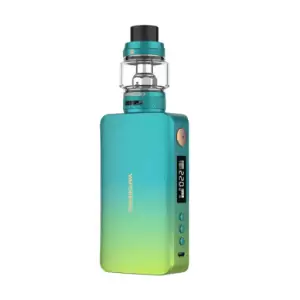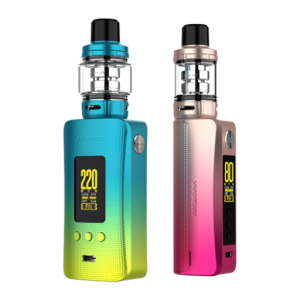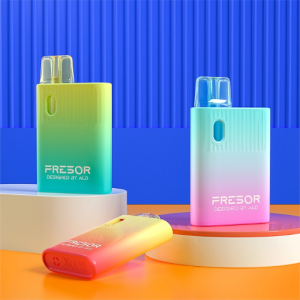In recent years, the vaping industry has witnessed a significant surge in the popularity of disposable vapes, driven by their convenience, variety of flavors, and perceived role as a less harmful alternative to traditional smoking. However, this rise has also introduced a challenge for regulatory bodies worldwide: how to navigate the diverse legislative landscapes that these products inhabit. From Australia’s unique prescription model to the flavor bans in parts of the United States, disposable vapes sit at the intersection of public health concerns, trade regulations, and consumer rights.
The global regulatory response to disposable vapes is as varied as the countries themselves, with legislation reflecting a broad spectrum of attitudes towards vaping. Some nations view disposable vapes as a pivotal tool in smoking cessation efforts, while others focus on the potential health risks and appeal to youth, leading to strict regulations or outright bans. This diversity presents a complex environment for users, manufacturers, and policymakers, all of whom must navigate a patchwork of laws that affect accessibility, usage, and the overall market for disposable vapes.
Understanding the global state of disposable vape legislation is crucial, not just for those directly involved in the vaping industry, but also for public health officials, legislators, and consumers. It raises important questions about how best to balance regulation with accessibility, ensuring that the benefits of disposable vapes in harm reduction can be harnessed without exacerbating public health issues. As we delve into the legislative frameworks from Australia to Zimbabwe, we’ll explore how different countries are addressing the challenge of regulating disposable vapes, shedding light on the global discourse surrounding these popular yet controversial products.

Setting the Scene: The Importance of Vape Legislation
The legislation surrounding disposable vapes plays a critical role in shaping the landscape of public health, trade, and consumer rights. As these devices continue to surge in popularity globally, understanding the nuances of vape legislation becomes paramount for ensuring the safety and well-being of users, while also fostering a viable market for manufacturers and retailers.
Why Disposable Vape Legislation Matters
- Public Health: At the forefront of legislative efforts is the concern for public health. Regulation of disposable vapes aims to mitigate potential health risks associated with vaping, such as nicotine addiction and the long-term effects of inhalant exposure. By setting standards for product safety, ingredient disclosure, and age restrictions, governments strive to protect citizens, particularly minors, from the adverse effects of vaping.
- Trade and Commerce: Legislation also significantly impacts trade and commerce within the vaping industry. Regulations affect how disposable vapes are manufactured, marketed, and sold, influencing both local economies and international trade relations. Clear and balanced regulations can help support innovation and competition in the market while ensuring products meet safety and quality standards.
- Consumer Rights: For consumers, legislation provides a framework that ensures access to safe and quality products. It also offers protection from misleading marketing practices and ensures that individuals are informed about the products they use. Legislation that strikes a balance between regulation and accessibility allows consumers to make informed choices about vaping, aligning with their rights and interests.
The Balance Between Regulation and Accessibility
Finding the right equilibrium between stringent regulation and ensuring accessibility to disposable vapes as a harm reduction tool is a complex challenge. Excessive restrictions may hinder adult smokers’ access to a viable alternative to combustible tobacco, potentially impacting public health goals. Conversely, lax regulations may fail to protect vulnerable populations from the risks of nicotine addiction and exposure to harmful substances.
Navigating the Complexities
The task of navigating vape legislation requires a concerted effort from all stakeholders:
- Regulatory Bodies must engage in ongoing research and dialogue to adapt regulations in line with emerging evidence about the risks and benefits of disposable vapes.
- Manufacturers and Retailers need to ensure compliance with diverse global regulations, advocating for policies that support harm reduction while safeguarding public health.
- Consumers are encouraged to stay informed about the legal status of disposable vapes in their jurisdictions and to advocate for sensible policies that protect their rights and health.
As the global community continues to grapple with the implications of vaping, the importance of well-considered, evidence-based vape legislation has never been clearer. Balancing regulation with accessibility remains a pivotal challenge, reflecting broader societal debates about health, freedom, and the role of government in regulating emerging technologies.
Australia: Navigating Through Prescription Requirements
Australia’s approach to regulating disposable vapes, particularly those containing nicotine, is distinguished by its prescription model. This unique strategy underscores the country’s cautious stance on vaping, aiming to balance public health concerns with the potential benefits of vaping as a smoking cessation aid.
Detailed Look at Australia’s Unique Approach
In Australia, nicotine disposable vapes are classified under therapeutic goods, necessitating a prescription from a medical professional for legal acquisition and use. This regulatory framework is designed to:
- Limit Access: By requiring a prescription, access to nicotine vaping products is restricted to individuals who are using these products as a tool to quit smoking, under the guidance of a healthcare provider.
- Control Usage: The prescription model also allows for monitoring and controlling the usage of disposable vapes, ensuring that they are used safely and effectively as part of a broader smoking cessation strategy.
Impact on the Market and Consumer Behavior
The prescription requirement has significant implications for the market and consumer behavior in Australia:
- Market Adaptation: The vaping industry in Australia has had to adapt to a model where nicotine vaping products are treated more like medicines than consumer goods. This has impacted how products are marketed, distributed, and sold.
- Consumer Access: For smokers looking to transition to vaping, the prescription model adds an additional step, but it also provides a framework for support and guidance from healthcare professionals.
Authority Figures on the Matter
Prominent health authorities, including the Therapeutic Goods Administration (TGA) and public health advocates, have voiced support for this regulatory approach, emphasizing its potential to minimize harm while preventing youth uptake and nicotine addiction. Dr. Nick Zwar, a leading expert in smoking cessation, highlights that “the prescription model for nicotine vaping products is a measured approach to support smokers in quitting while mitigating the risk of initiating non-smokers, particularly youth.”
Navigating Australia’s Regulations
For those in Australia, navigating the vaping landscape means:
- Seeking Medical Advice: Individuals interested in using disposable vapes for smoking cessation should consult with healthcare professionals to discuss their suitability and obtain a prescription.
- Understanding Legal Obligations: Both consumers and providers must be aware of their legal obligations under the prescription model, ensuring compliance with TGA regulations.
- Staying Informed: As the regulatory environment evolves, staying informed about changes and updates to legislation is crucial for both users and the industry.
Australia’s prescription requirement for nicotine disposable vapes represents a unique approach to vaping regulation, reflecting a commitment to public health and the principle of harm reduction. By requiring medical oversight, Australia aims to harness the potential benefits of vaping for smoking cessation while addressing concerns about addiction and youth access.
United States: Flavor Bans and State-Specific Regulations
The United States presents a complex tapestry of regulations for disposable vapes, characterized by federal oversight interwoven with diverse state-specific laws. Central to the regulatory discussion is the Food and Drug Administration (FDA)’s stance on flavor bans, aimed primarily at curbing youth vaping, alongside various state regulations that add another layer of complexity.
Overview of the FDA’s Role in Regulating Disposable Vapes
The FDA has asserted significant influence over the vaping industry, including disposable vapes, through its regulatory powers:
- Flavor Bans: In response to rising concerns about youth vaping, the FDA has implemented restrictions on flavored e-cigarette products. These regulations particularly target flavors that are appealing to minors, although disposable vapes have been a point of contention due to perceived loopholes that allowed them to continue offering enticing flavors.
- Premarket Authorization: The FDA requires all vaping products, including disposable vapes, to undergo a premarket review and authorization process. This aims to ensure that products meet stringent health and safety standards before reaching consumers.
The Varying Restrictions Across States
Beyond federal regulations, individual states have taken varied approaches to disposable vapes, reflecting local public health priorities and legislative environments:
- Complete Flavor Bans: States like Massachusetts have implemented comprehensive flavor bans that include all vaping products, disposable vapes included, in efforts to further dissuade youth from vaping.
- Age Restrictions and Access: Many states have also enacted laws raising the minimum age for purchasing vaping products to 21, aligning with federal legislation, and have introduced additional measures to limit the accessibility and marketing of vaping products to protect young populations.
The Ongoing Debate Over Flavors and Youth Vaping
The regulatory focus on flavors within the vaping industry, particularly regarding disposable vapes, underscores a contentious debate. Health experts and policymakers argue that flavored vaping products disproportionately attract teenagers and young adults, potentially leading to nicotine addiction at an early age. Dr. Scott Gottlieb, former FDA Commissioner, has emphasized that “flavors play a significant role in driving the youth appeal,” advocating for stringent regulations to mitigate this issue.
Navigating the Regulatory Landscape in the United States
For users and businesses involved with disposable vapes in the U.S., navigating the regulatory environment requires:
- Awareness of Federal and State Laws: Staying informed about both levels of regulation is crucial for compliance and responsible use.
- Adaptation to Changing Regulations: The regulatory landscape is dynamic, with ongoing debates and legislative changes. Flexibility and proactive engagement with regulatory trends are essential.
- Advocacy and Education: Participating in discussions and advocacy efforts can help shape a balanced approach to vaping regulation that considers both public health concerns and the potential benefits of vaping as a harm reduction tool.
The United States’ approach to disposable vapes, marked by a mix of federal initiatives and state-specific regulations, reflects the ongoing challenge of balancing public health interests with individual freedoms and market dynamics. Understanding and navigating this complex regulatory framework is essential for all stakeholders in the vaping community.

United Kingdom: A Model of Support for Harm Reduction
The United Kingdom has emerged as a notable example of support for disposable vapes as part of a comprehensive harm reduction strategy. Public Health England (PHE), an executive agency of the Department of Health and Social Care, has been at the forefront of endorsing vaping as a less harmful alternative to smoking traditional cigarettes. This position is underpinned by substantial evidence suggesting that vaping can significantly reduce the health risks associated with smoking.
Regulatory Framework Ensuring Product Safety and Quality
The UK’s approach to regulating disposable vapes is guided by the Tobacco and Related Products Regulations (TRPR), which transposes the EU’s Tobacco Products Directive (TPD) into national law. Key aspects of the regulation include:
- Product Standards: TRPR sets specific safety and quality requirements for disposable vapes, including limits on nicotine strength (no more than 20 mg/mL) and tank sizes (no larger than 2 mL for tanks that are not disposable).
- Packaging and Labeling: Packaging must be child-resistant and tamper-evident, and include health warnings covering 30% of the surface area, providing consumers with clear information about the product.
- Advertising Restrictions: The regulations also impose restrictions on advertising disposable vapes, particularly in ways that could appeal to non-smokers or young people.
Public Health England’s Stance on Vaping
Public Health England has consistently supported vaping as a tool for smoking cessation, citing evidence that vaping is 95% less harmful than smoking cigarettes. This position has influenced the UK’s regulatory and public health approach, aiming to encourage smokers to switch to vaping as a safer alternative. PHE’s stance is encapsulated by the statement from Professor John Newton, Director of Health Improvement at PHE: “Smokers should be encouraged to try e-cigarettes as a means of stopping smoking, and disposable vapes can play a role in achieving this goal.”
Navigating Vaping Laws in the United Kingdom
For consumers and businesses involved with disposable vapes in the UK, navigating the legal landscape involves:
- Compliance with TRPR: Ensuring that products meet all regulatory requirements is essential for legal sale and use.
- Engagement with Public Health Initiatives: Participating in or supporting smoking cessation campaigns that include vaping as an alternative can help align with public health goals.
- Staying Informed: Keeping up-to-date with the latest research and regulatory changes helps stakeholders adapt to the evolving landscape of vaping regulation.
The United Kingdom’s model of supporting disposable vapes for harm reduction highlights the potential of vaping to contribute to public health goals, especially in reducing smoking rates. By adopting evidence-based regulations and promoting informed public discourse, the UK provides a framework for balancing the benefits of vaping with the need to protect against potential risks.
European Union: Harmonized Yet Stringent TPD Regulations
The European Union’s approach to disposable vapes is defined by the Tobacco Products Directive (TPD), a harmonized framework that sets standards across member states while allowing for individual countries to enforce stricter measures if they choose. This regulatory balance aims to ensure product safety and quality, protect public health, and minimize the appeal of vaping products to young people.
Examination of the Tobacco Products Directive (TPD) and Its Implications for Disposable Vapes
The TPD outlines specific requirements for the manufacture, presentation, and sale of tobacco and vaping products, including disposable vapes, across the EU:
- Nicotine Strength and Volume Limits: To reduce the risk of excessive nicotine intake, the TPD caps nicotine concentration at 20 mg/mL and restricts the volume of e-liquid in disposable vapes to 10 mL.
- Health Warnings: Packaging for disposable vapes must include health warnings covering a significant portion of the surface area, informing consumers about the risks associated with vaping.
- Ingredient Disclosure: Manufacturers are required to disclose all ingredients contained in their products, fostering transparency and allowing regulators to ban substances deemed harmful.
Country-level Nuances Within the EU Framework
Despite the harmonized approach of the TPD, individual EU member states have the freedom to implement additional regulations:
- Flavor Bans: Some countries, such as Finland, have introduced bans on certain flavors of e-liquids to further discourage vaping among non-smokers and young people.
- Public Usage Restrictions: Other member states have extended smoking bans to include vaping, regulating the use of disposable vapes in public spaces to protect public health.
Navigating Vaping Laws in the European Union
For individuals and businesses involved with disposable vapes in the EU, understanding and complying with the TPD, as well as national regulations, is crucial:
- Stay Informed: Keeping up-to-date with both EU-wide regulations and country-specific laws is essential for navigating the complex legal landscape.
- Ensure Compliance: Manufacturers and retailers must ensure their products meet the stringent requirements set forth by the TPD and any additional national regulations.
- Engage with Policymakers: Active participation in discussions and policymaking processes can help shape future regulations, ensuring they are evidence-based and effectively balance public health concerns with consumer rights.
The European Union’s regulatory framework for disposable vapes, characterized by the TPD and its implementation across member states, exemplifies a comprehensive yet flexible approach to vaping regulation. By adhering to these standards, the EU aims to protect public health while accommodating the nuances of individual member states’ public health policies and cultural attitudes towards vaping.
Middle East: Cultural Norms and Regulatory Rigor
In the Middle East, the regulatory landscape for disposable vapes is profoundly influenced by cultural norms, religious beliefs, and a rigorous approach to public health. Many countries within this region exhibit strict controls or outright bans on vaping products, reflecting concerns over health risks and the social implications of vaping.
Complex Relationship Between Cultural Norms, Religious Beliefs, and Vaping Legislation
- Health Concerns and Religious Beliefs: In the Middle East, health concerns regarding vaping intertwine with religious beliefs that discourage the use of substances potentially harmful to the body. This fusion of health and morality often results in stringent regulations or bans on disposable vapes to protect the population and adhere to religious principles.
- Social Implications: The social perception of vaping and its alignment with cultural norms plays a significant role in shaping regulatory responses. In societies where smoking and vaping are viewed unfavorably, regulations tend to be more restrictive.
Case Studies from Countries Like Saudi Arabia and the United Arab Emirates
- Saudi Arabia: Saudi Arabia has taken steps to regulate the sale and use of disposable vapes, implementing measures to control product quality and restrict youth access. These regulations reflect the kingdom’s balance between accommodating adult smokers looking for alternatives and protecting public health and social values.
- United Arab Emirates (UAE): The UAE initially imposed a ban on the sale and importation of vaping products, including disposable vapes. However, recent years have seen a relaxation of these restrictions, allowing the regulated sale of vaping products as part of a strategy to reduce smoking rates while ensuring public health safety.
Navigating Vaping Laws in the Middle East
For individuals and businesses engaging with disposable vapes in the Middle East, navigating the region’s legal and cultural landscape requires careful consideration:
- Understanding Local Regulations: Familiarity with each country’s specific laws on vaping is essential, as regulations can vary significantly across the region.
- Respecting Cultural and Religious Contexts: Awareness and respect for the cultural and religious contexts that influence vaping regulations are crucial for responsible use and business practices.
- Staying Informed of Changes: Regulatory landscapes in the Middle East are evolving, with countries periodically adjusting their stance on vaping. Staying informed of these changes is key for compliance and respectful engagement.
The Middle East’s approach to disposable vapes underscores the importance of cultural, legal, and public health considerations in shaping vaping policies. By understanding and respecting these factors, individuals and businesses can navigate the complexities of vaping laws in the region effectively, ensuring that their practices align with local norms and regulations.

Conclusion: A World in Flux Over Vape Legislation
The exploration of disposable vape legislation from Australia to Zimbabwe reveals a world grappling with the challenges and opportunities presented by vaping. The global state of disposable vape legislation is marked by a spectrum of regulatory responses, reflecting diverse public health strategies, cultural attitudes, and legal frameworks. This journey underscores the complexity of achieving a balance between safeguarding public health, respecting individual choices, and recognizing the potential harm reduction benefits of vaping.
Recap of the Global State of Disposable Vape Legislation
From Australia’s unique prescription-based approach to the United States’ flavor bans and state-specific regulations, and from the UK’s supportive stance on harm reduction to the Middle East’s rigorous controls, the regulatory environment is diverse. Each region’s approach to disposable vapes illustrates the varied priorities and challenges faced by policymakers in addressing the phenomenon of vaping.
The Ongoing Need for Dialogue, Research, and Balanced Regulation
The global discourse on disposable vape legislation is far from settled. The need for ongoing dialogue among public health experts, policymakers, industry stakeholders, and the vaping community is crucial for evolving regulatory frameworks that effectively address the complexities of vaping. Continued research into the health impacts of vaping, alongside careful monitoring of market and usage trends, will provide the evidence base needed to inform future legislation.
- Dialogue is essential for reconciling the diverse perspectives on vaping and for developing regulations that consider the nuances of each context.
- Research into both the potential risks and benefits of vaping is critical for crafting policies based on scientific evidence rather than conjecture or moral panic.
- Balanced Regulation that protects public health, particularly youth, while not unduly restricting adult smokers’ access to less harmful alternatives, remains the goal.
Conclusion
As we consider the global state of disposable vape legislation, it’s clear that the path forward requires a nuanced understanding of the issues at hand. By staying informed, engaging in constructive dialogue, and advocating for evidence-based policies, stakeholders can navigate the complexities of vape legislation. The journey from Australia to Zimbabwe highlights not just the challenges of regulating a disruptive technology but also the potential for thoughtful, balanced policies to contribute to public health goals worldwide.






